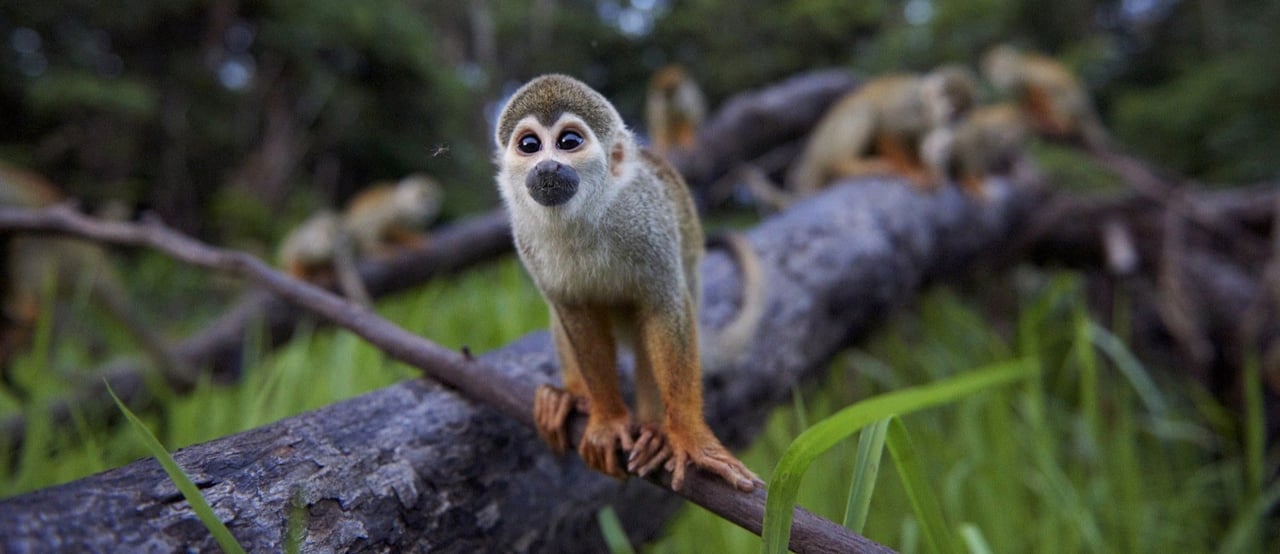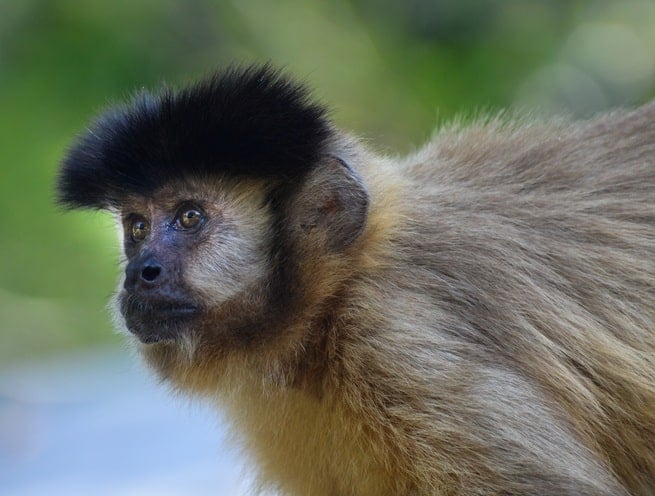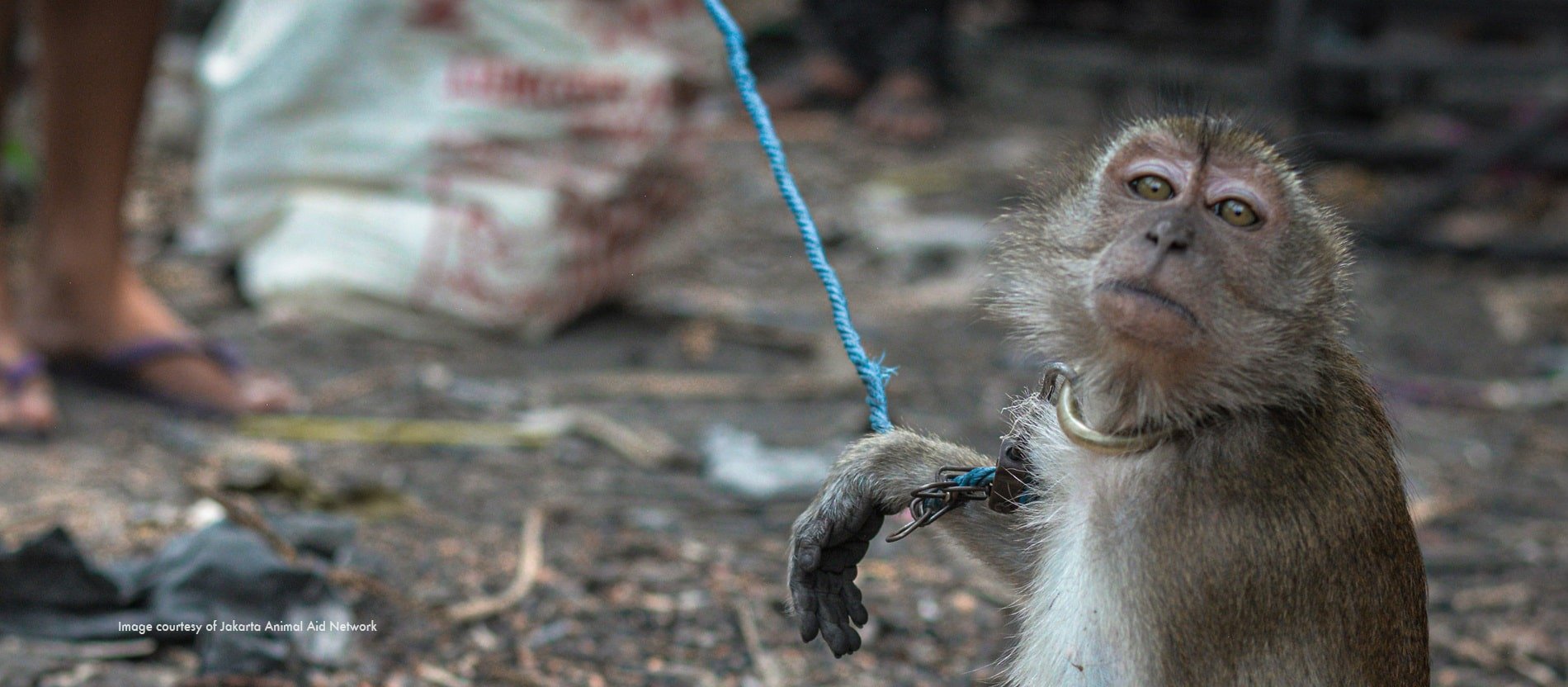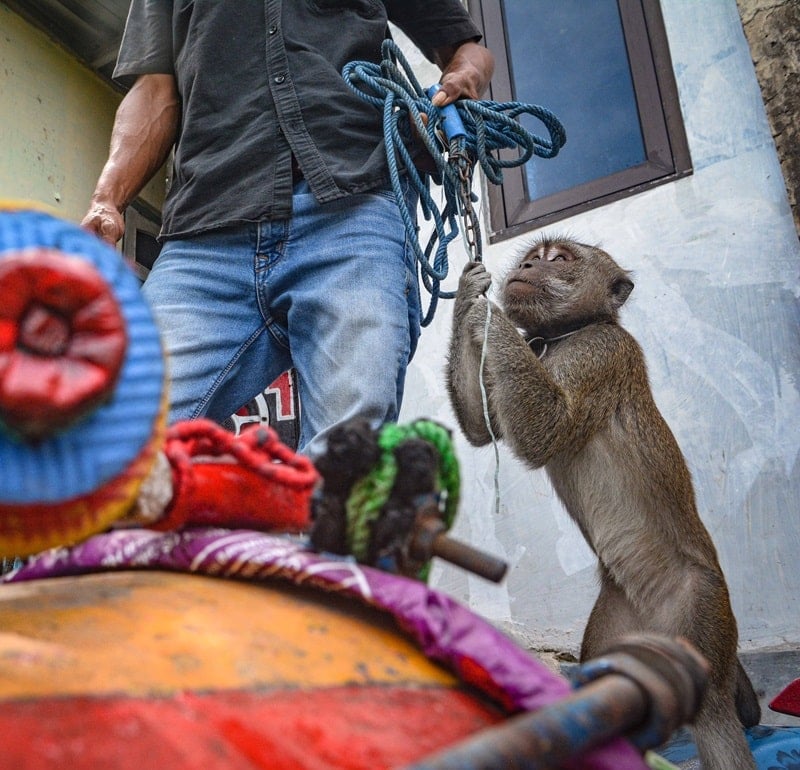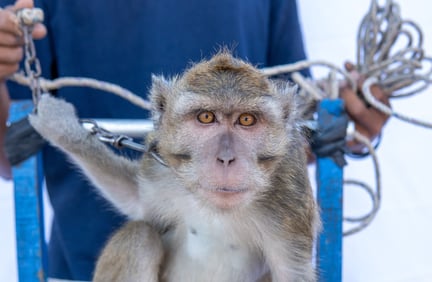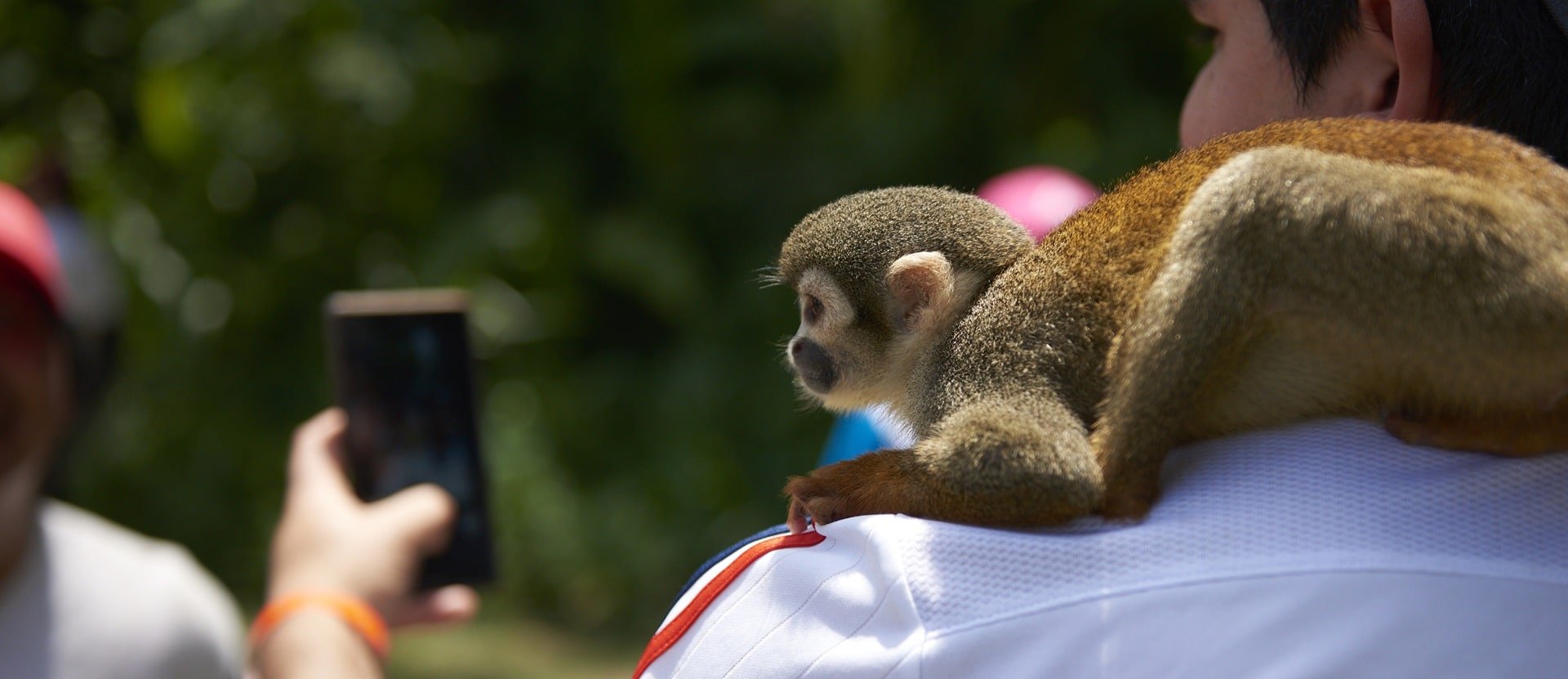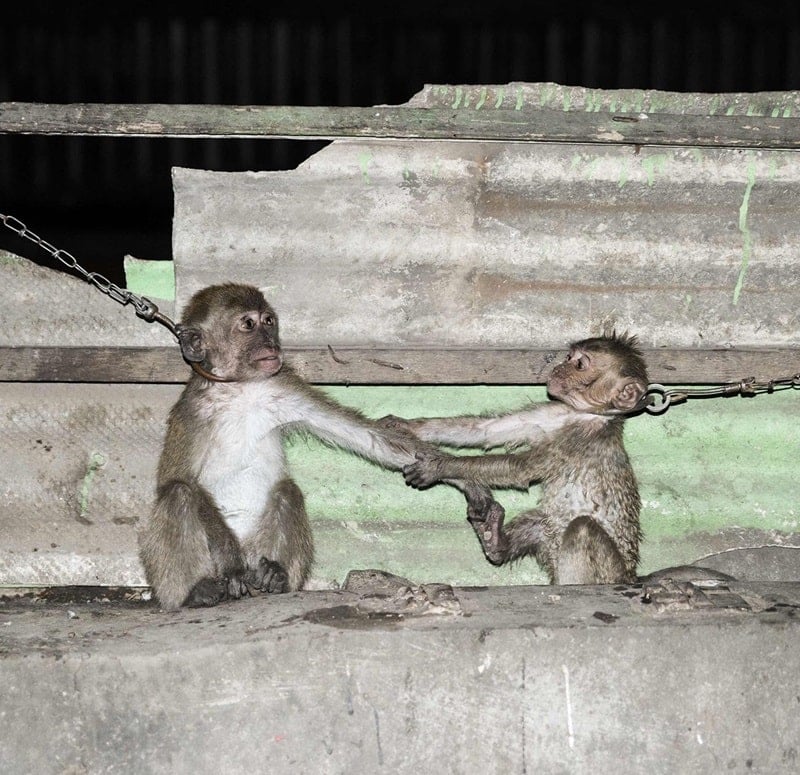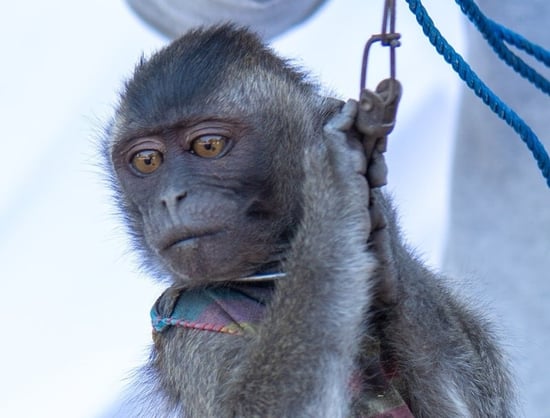Image credit: World Animal Protection / Nando Machado
Do you know the difference between monkeys and apes? Read on to learn how to identify the mischievous monkey and other fun facts about these playful primates.
The word ‘monkey’ is sometimes used to describe any member of the primate family that isn’t a human. But actually, monkeys are quite different to apes in a couple of important ways.
The easiest way to spot the difference is by the tail – monkeys have one and apes don’t. A monkey’s tail helps it balance while walking along branches and swing from tree to tree. It can even use it to pick up food and other objects.
Monkeys generally have smaller bodies and brains than apes, but that doesn’t mean they aren’t intelligent! They are great problem solvers, and some species have even been spotted using stone tools to smash open nuts.
There are around 200 species of monkey, from the tiny Pygmy Marmoset, which grows to around 14cm long, up to the Mandrill which can weigh more than 50kg. Other species include Macaques, Baboons, Marmosets, Howler Monkeys, Spider Monkeys, and Capuchins.
Monkeys love to socialise. They live in groups and their young spend most of their time playing. They use sounds, facial expressions, and body language to communicate and even the grooming process of picking bugs and dirt off each other is a way of strengthening their social bonds.
What’s the problem with dancing monkey videos?
Image credit: Jakarta Animal Aid Network
Most species of monkey are in some form of danger from land clearing that destroys their habitat, hunting, disease, and the wildlife trade.
One of the most targeted monkeys for legal and illegal trade is the Macaque. And it has lot to do with the huge rise in videos of ‘performing’ baby Macaques on social media sites like YouTube and TikTok in recent years.
Many of these videos show baby Macaques dressed up and treated like human babies. But in the wild, the young should stay with their mother for at least a year. They are being torn away from their family and social groups from as young as a day old to be exploited for likes and shares.
Even older Macaques can be tormented for the purposes of this so-called ‘entertainment’. They are trained to perform human-like behaviours using physical punishment and starvation, and often kept in small cages without the social interaction that’s so important to monkeys.
How is World Animal Protection helping?
Image credit: Jakarta Animal Aid Network
World Animal Protection is a member of The Asia for Animals Social Media Animal Cruelty Coalition (SMACC), a group of organisations committed to ending the availability, spread, and profitability of online animal cruelty content.
In 2023, SMACC released a report into the cruel exploitation of Macaques for social media that shone a spotlight on the cruel conditions these endangered animals are kept in.
The report called on social media companies including YouTube, Facebook, Instagram, TikTok and X (formerly known as Twitter) to work with animal welfare organisations to identify and remove cruelty content from their platforms.
With your support we have also partnered with local organisations like the Jakarta Animal Aid Network to rescue 31 Macaques and rehabilitate and return them safely to the wild.
Image credit: World Animal Protection / Nando Machado
There are few things you can do to help stop the exploitation of Macaques for social media and end cruelty to baby monkeys.
Firstly, don’t like, share, or engage with any videos you see online. That includes commenting, even your aim is to educate people. Any kind of comment can help raise the profile of cruelty content.
Report any Macaque videos or other content that exploits wild animals to the social media platform and directly to The Asia for Animals Social Media Animal Cruelty Coalition (SMACC).
Create your own social media post to highlight this issue without increasing the profile of exploitative content creators.
